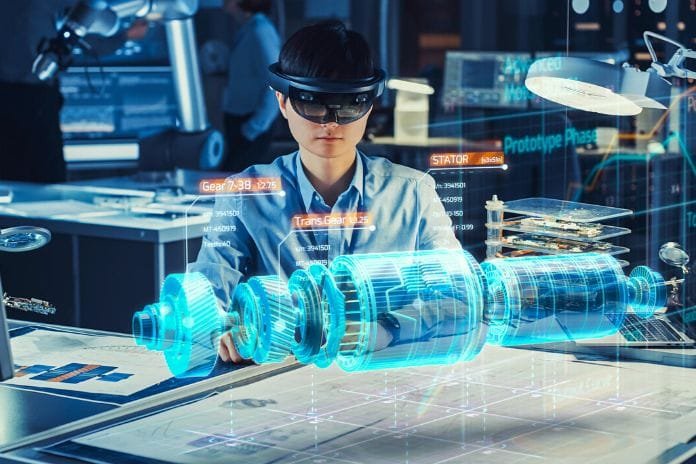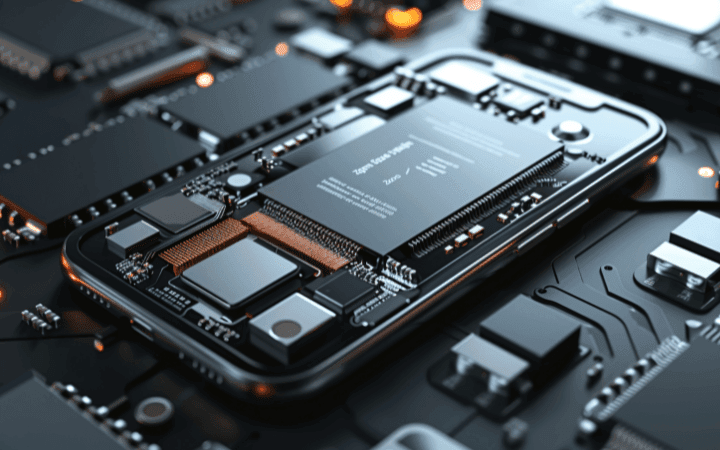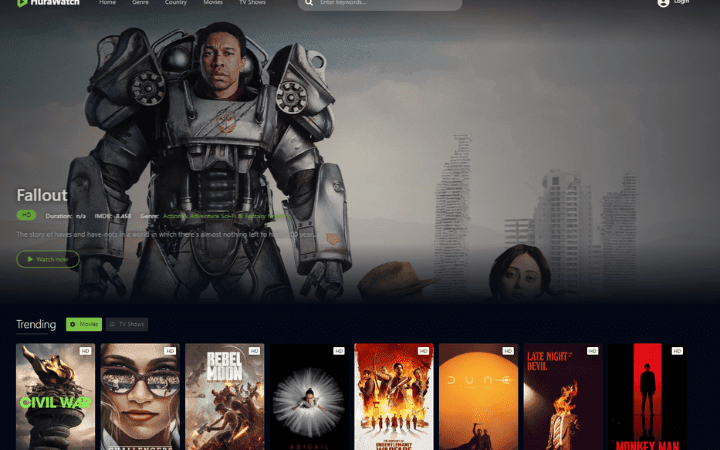Augmented & Virtual Reality Will Change The Way Of Working

Virtual Reality can transform how people live their daily work lives, interact with people, and complete specific tasks. According to the leading technological giants, including Meta and Nvidia, the benefits can be translated into “intelligent” multitasking, carrying out multiple activities simultaneously without losing concentration, and more efficient management of team activities, to mention some examples. The growing desire to improve the quality of work is introducing new features to the viewers, making them more efficient and easier to use.
New Ways To Experience Work With VR And AR: Some Real Applications
We have already analyzed the main fields of application in Business, which range from scientific research to the transport sector, without neglecting entertainment. However, it is necessary to make a small clarification: we very often tend to speak of Virtual Reality & Augmented Reality interchangeably, almost as if the two terms were synonymous. Nothing more wrong! AR & VR are two terms that refer to very different technologies, although they can be used in synergy in some cases. Augmented, virtual and mixed Reality will become part of a fifth of large companies as an integral part of the broader digital transformation process. AR and VR will help organizations expand communication by allowing employees and customers to obtain real-time information and use virtual environments to test innovations.
Improve Talent Acquisition
Do you work in the HR field? Then you will know how recruiting the right resources is crucial for building successful work teams. First, with the introduction of VR in resource management, the candidate will be able to see his future jobs. How is it possible? Simple: the latter will have to wear a headset integrated with a specific app and watch a VR experience, allowing you to “immerse yourself” in the highlights of a typical working day as if you were living it.
He will also be able to take virtual tours of the offices and understand if the environment could be stimulating for him. In this way, both the recruiter and the candidate will have a clearer vision if the choice they are about to make is correct. On the other hand, an excellent solution for augmented Reality will be to introduce virtual screens with company descriptions and presentations near trade fairs and stands.
Making Remote Teamwork More Collaborative And Real
When team members are not the same, it can be somewhat complex to get together for brainstorming sessions, meetings with other departments, and much more. Virtual Reality ensures that activities are completed, with concrete results, in real-time without resorting to asynchronous communications such as email traces. It also increases employee involvement, traditionally based on in-person presence. Virtual Reality can fuel initiatives in the digital world that are almost like Reality: from virtual reality marathons to VR concerts. It will be enough to be equipped with a viewer and a digital avatar.
Improve Data Visualization And Decisions Based On It
Data-driven collaboration is one of the most promising VR applications in which companies invest the most. In a virtual space, you can model analytical information, create graphs and diagrams and carry out insights in real-time in front of your colleagues. This type of collaboration is much more effective and engaging than traditional spreadsheets and presentations, which often require more cognitive effort.
Create Employee Training Programs
NASA was the first Reality to have introduced training courses through virtual Reality. In particular, it was used to simulate its pilots’ space flights and train reflexes. The goal is to gradually introduce training programs for staff in companies of all types and sectors. The learning sessions, always led by an expert, will be based on cognitive give and take, which is much more difficult in a video-based conference or webinar.
In summary, virtual Reality recreates a group learning environment with all its collaborative potential: participants will be able to interrupt each other, make eye contact, communicate through gestures and ensure they are not overlooked or ignored. While some of the applications mentioned above are still entirely under development, others, such as the modality above for training programs, have already been tested by major companies. A few names: Siemens, KFC, and UPS. What will be the next to introduce AR and VR for their businesses?
From Meta Quest 2 To Nvidia Holographic Glasses: Ever More Performing Viewers
This is the great bet of Mark Zuckerberg, who last October announced the imminent arrival in the world of the Metaverse. A few days later, the website dedicated to oculus.com viewers was redirected to the Facebook store, officially marking the transaction from “Oculus Quest” to “Meta Quest.” Meta Quest 2 is Meta’s flagship viewer, subject to frequent updates and improvements to guarantee its users an increasingly real experience. For example, Quest 2’s new Hand Tracking 2.0 mode brings some noticeable improvements to controller-less hands.
The new method can handle hands moving quickly, one covering the other, and even hands touching each other – scenarios that previously caused the tracking to be temporarily broken. This should make hand tracking much more convenient to use and allow for new actions, such as counting on your fingers. All this is possible thanks to an improvement of the machine learning algorithms through which, working on the images, it is possible to reconstruct the position and movement. With the latest algorithm update, in particular, an improvement in the prediction of the fingers when occluded from view has been obtained.
Meta And VR
According to the latest rumors, the next Meta viewer dedicated to virtual Reality will take the name of Meta Cambria. The product will feature the newest generation screens based on MiniLed technology for an even more immersive experience. Similarly to Quest 2, it will be stand-alone so that it won’t depend on a smartphone or computer. The target change is interesting: while Quest was initially designed for Gaming and Entertainment (although it can also be used for work), Cambria’s focus will be on productivity and improvement in the execution of work tasks. Furthermore, with Meta Quest 1 and 2, you can visualize the physical environment through the passthrough mode, and apps can expand it with digital objects.
However, the video image is black and white, not high definition. Cambria aims to bring passthrough to the next level. Thanks to the high-resolution RGB cameras, the physical environment is rendered in color and crystal clear, so you can take notes with a ballpoint pen or move around your virtual office as if it were real. Cambria will also be equipped with pancake lenses, which ensure greater clarity without distortion at the edges. Pancake works by folding many lenses together in a curve, bouncing the light inside the glass or plastic. This reduces the necessary distance between the wearer’s eyes and the display. This allows the VR headsets to be thinner and lighter while freeing up processing power, as the problem of distortion is eliminated.
Nvidia Viewers
Further developments in the field of headsets come from Nvidia: Ahead of this year’s upcoming SIGGRAPH 2022 conference, a team of researchers from NVIDIA Research and Stanford has published a paper showing a pair of very thinly designed holographic VR glasses. . Displays can show accurate holographic content, solving the problem of vergence-accommodation, which contributes to the various symptoms of malaise that accompany the use of VR systems. In addition, the researchers highlight several algorithms for optimal image rendering for better visual quality.
The size of commercially available VR headsets hasn’t improved much, mainly due to an optical constraint. Thanks to holographic glasses, which would eliminate the gap between lens and display, it will become possible to adopt shapes and sizes much slimmer than the viewers currently on the market. Of course, Nvidia’s design has limitations, including the limited field of view. However, this is further experimentation that will bring VR and AR to be increasingly within everyone’s reach.
The AR And VR Proposals Of Big Techs For A New Way Of Living In The Office
It is now clear: the big tech companies are pushing hard on a new way of working in the name of flexibility and technology. Let’s analyze the main news in the VR field applied to Business. In September 2020, Zuckerberg announced Infinite Office, the new feature of the Quest viewers that would introduce a new way of interpreting work, and organizing spaces, data, and resources. Since the end of 2020, small Infinite features have been gradually introduced, while others are still in Beta or hidden, awaiting an official release. Here are the main Infinite Office features already active on Quest:
- Support for Bluetooth keyboards and mice
- Keyboard Tracking (currently only for Logitech K830 and Apple Magic Keyboard)
- Desktop tracking
- Multitask with up to three windows
- Improvements for Oculus Browser (e.g., more flexible window management)
- Smartphone notifications in VR
- File manager
- Virtual work environment
Recently, hints of an upcoming Infinite Office release have been found in the firmware of the forthcoming update in Quest. The files include a configuration menu that allows users to create their own customized virtual office, from the design of the desk to the activation of a natural complete work environment, up to the possibility of pairing Bluetooth devices. The future features of Infinix Office will be compatible with Quest 2, but even more with Meta Cambria, the viewers dedicated to productivity and efficiency in the workplace.
Conclusions
The prerequisites for a paradigm shift in working life exist, and the various alternatives constantly evolve. To be successful in these years of experimentation, a technological change must correspond to a rapid change of mindset, which, if open and inclined to change, will ensure that all the cards on the table can finally find the correct order.
Also Read: Digital Economy: How Technology Is Accelerating Business






